Snowflakes

Winter Wonders
They say that no two snowflakes are alike. Is this really true?
From “The Beautiful Science of Snow” (published in the Christian Science Monitor, February 22, 2000)
-
You may have heard that no two snowflakes are alike. That may be true. Then again, it may not. It's hard to prove, for lots of reasons. For one, since snow eventually melts, every snowflake that has ever fallen isn't around to compare with all the other snowflakes. Who knows if a snowflake that fell in Siberia 300 years ago is the same as one that fell in northern Idaho last week? An estimated 1 undecillion snowflakes (a 1 followed by 36 zeroes) have fallen on the earth. That's a lot of crystals to try to compare with each other.
-
"Scientists think snowflakes can't be alike because of the way snowflakes are formed," says Michael Split... a meteorologist at the University of Utah in Salt Lake City. Tiny water droplets in the cold air high in the clouds freeze into ice crystals. More molecules of water attach to each crystal. The crystals may fall through different layers of air at different temperatures. They are banged about by winds. Some layers of air have more moisture than others, so crystals may join together.
-
-
By the time an average snowflake falls to earth, it may contain billions of molecules of ice. These molecules can join together in so many different ways, that the number of possible combinations is enormous. Big enough to make it very unlikely that two snowflakes would form exactly alike. But it's not impossible.
-
-
"To the human eye, two snowflakes may look very much alike," Mr. Split says. "But looking closer, through a magnifying glass or microscope, you would probably see many differences between them."
Wilson Alwyn Bentley was known as the Snowflake Man. He lived in Jericho, Vt., and spent 47 years observing and writing about snowflakes. A self educated farmer, Bentley attracted world attention with his pioneering work in the area of photomicrography, most notably his extensive work with snow crystals (commonly known as snowflakes). By adapting a microscope to a bellows camera, and years of trial and error, he became the first person to photograph a single snow crystal in 1885.
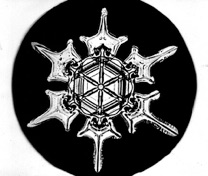


He would go on to capture more than 5000 snowflakes during his lifetime, not finding any two alike. His snow crystal photomicrographs were acquired by colleges and universities throughout the world and he published many articles for magazines and journals including, Scientific American and National Geographic. The photos are beautiful, and still enjoyed by snowflake lovers to this day. You can see more of his work here.

More recently, Kenneth G. Libbrecht has taken up the mantle of snowflake photographer. He is a professor of physics at Caltech. Although he was originally trained as a solar astronomer, much of his recent research has focused on the properties of ice crystals, particularly the structure of snowflakes.
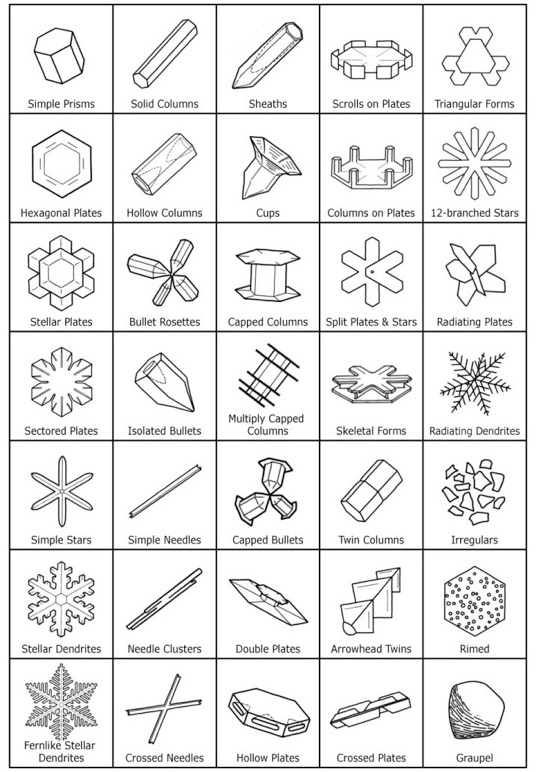
Different types of Snowflakes
In addition to his professional papers, Libbrecht has published several popular books illustrating the variety of snowflake forms and featuring his fantastic photographs (above top).
Four of Libbrecht's snowflake photos:
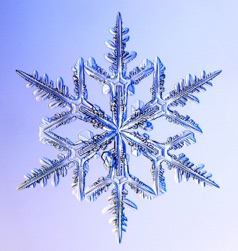

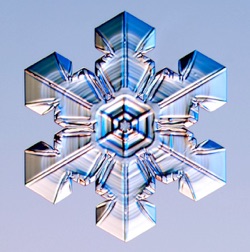
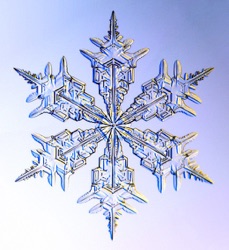
were selected by the United States Postal Service as designs for stamps for the 2006 winter holiday season, with a total printing of approximately 3 billion stamps:
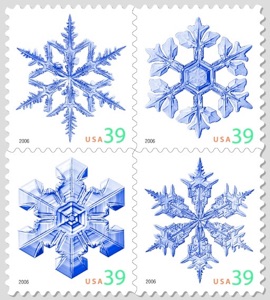
For more information on snowflakes, and some really lovely photographs, go explore his website, SnowCrystals.com (The Libbrecht diagram and snowflake photos are courtesy of his website.)
Back to MAIN My Pysanky page.
Back to MAIN Snowflake Pysanky page.
Search my site with Google



